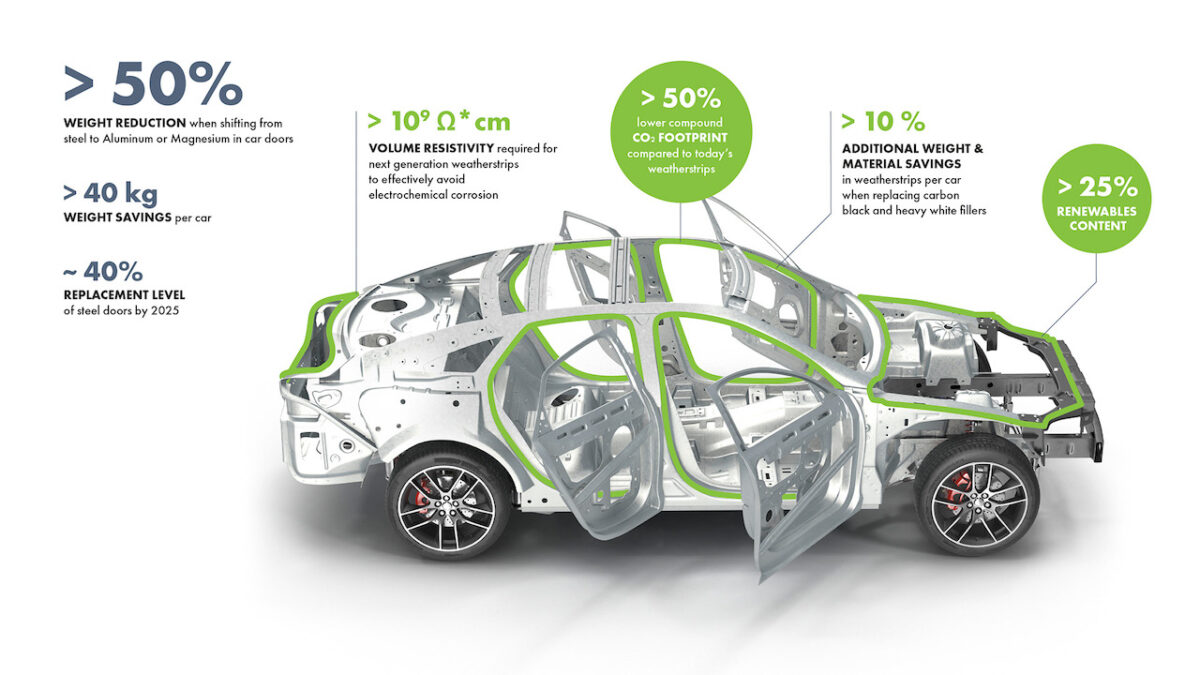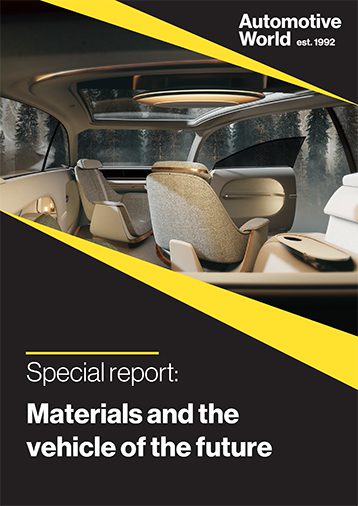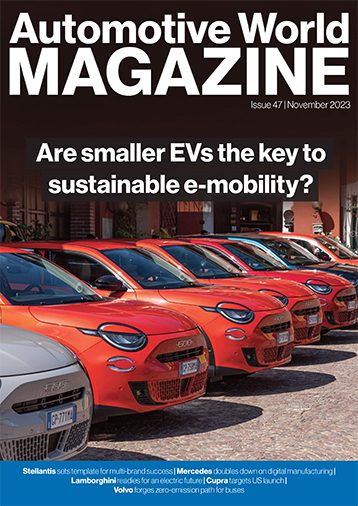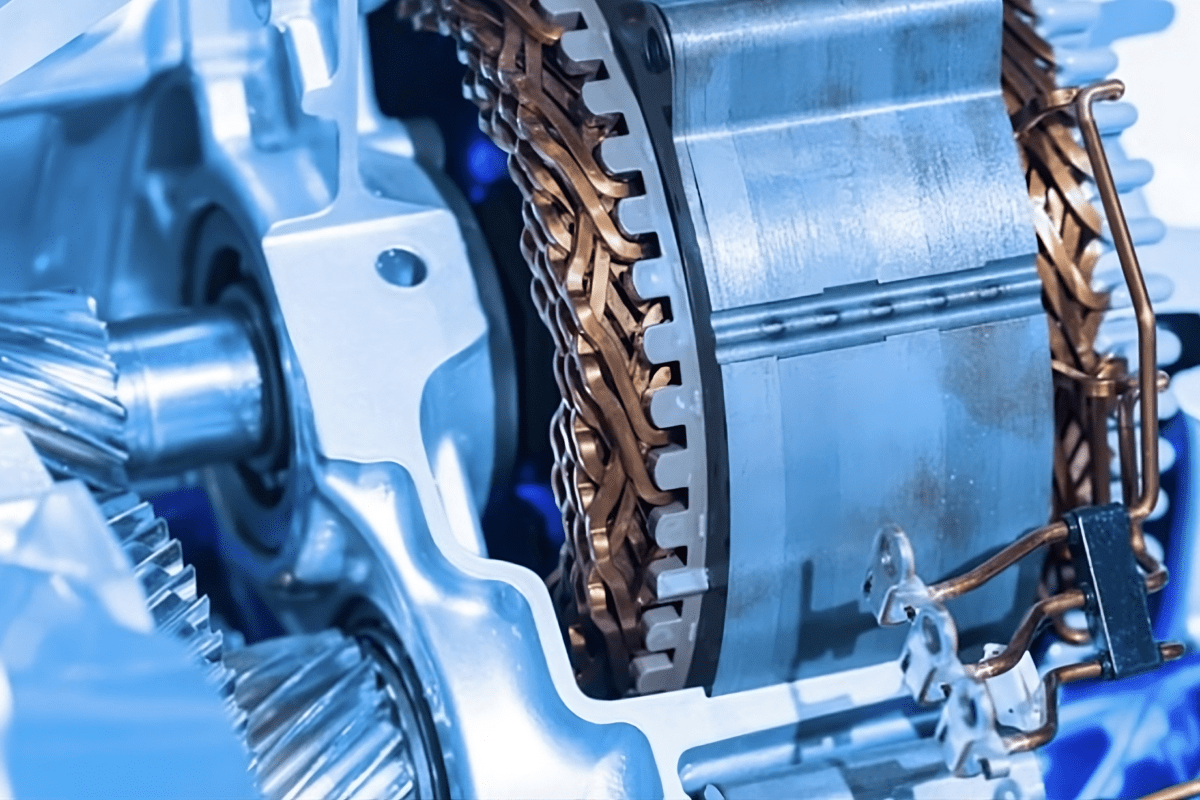The impending ban of internal combustion engine vehicles in several markets and the subsequent investment in electric mobility are two of the major movements in an industry-scale push for more sustainable transport.
Industry engagement on larger issues is also becoming more nuanced as OEMs take their focus beyond tailpipe emissions. Many are actively exploring circularity as a means to both secure and decarbonise critical material supply chains. However, to create fundamental change, automakers and suppliers will need to simultaneously ‘think big’ and ‘think small’ on material sourcing and composition.
Martin Ledwon, Vice President of Sustainability at Tier 3 supplier UPM Biochemicals (UPM), tells Automotive World that the next step is to tackle essential but less obviously environmentally deleterious materials, particularly elastomers (hoses and seals) and thermoplastics. Doing so, he argues, could yield benefits that go beyond general sustainability concerns and produce lighter, more efficient electric vehicles (EVs).
De-fossilising functional fillers
Carbon black—a fine powder resulting from the partial combustion of hydrocarbons—is a versatile substance that has automotive industry applications ranging from EV batteries to polymers and metallurgy. However, because it is reliant on burning fossil fuels like crude oil, producing carbon black can contribute to environmental pollution. If using an oil furnace, the US Environmental Protection Agency notes that particulate matter, carbon monoxide, nitrogen oxides, and sulphur compounds are among the emissions released.

UPM calls common variants such as thermal black and furnace black “functional fillers”, which are used to bulk out products made from materials like plastic and rubber. “A rubber hose, for example, could contain 30-40% rubber depending on the formulation. But what makes up the rest? The answer is functional fillers,” states Florian Diehl, Senior Manager of Sales & Marketing at UPM. The company’s solution was to develop a renewable functional filler (RFF)—UPM BioMotion—based on beech wood sourced from sustainable forests near its facilities in Leuna, Germany. UPM also uses the same basic material to produce glycol for creating EV coolant.
“RFFs resonate with automotive industry sustainability megatrends. However, everyone is talking about decarbonisation, and that isn’t possible in the materials sector, which inherently deals with carbon as an irreplaceable element,” highlights Diehl. Therefore, UPM believes that the emphasis should instead be placed on de-fossilisation. By eliminating fossil fuels through the use of wood as a renewable feedstock for the material production process, it claims that BioMotion has at least a 90% smaller carbon footprint compared to traditional carbon black options. From late 2024, its €750m (US$835m) biorefinery is expected to produce 220,000 tonnes of renewable chemicals annually, including RFF, through carbon neutral operations.
Lightweighting
The quantifiable product CO2 reduction achieved using RFFs is likely to be welcomed by automakers increasingly focused on substantiating their eco credentials through traceability. However, Diehl considers that the benefits for e-mobility go much further. “This is a new class of fillers; it has its own performance profile. The density is significantly lower than inorganic materials or traditional functional fillers like carbon black—between 25% and 50%—so manufactured final products are much lighter.” Importantly, UPM claims there is no performance trade-off when substituting for a traditional functional filler, which means automotive material supply chains can pivot quickly.
Although Ledwon concedes that part of UPM’s near-term challenge will be to build industry enthusiasm for a relatively new product, he expects the market for fossil fuel-free elastomers and plastics to become highly competitive. Indeed, there are already several players exploring similar concepts. Novelis is using bioplastics and additive manufacturing to lightweight EVs, facilitating both cost savings and easier recycling. Meanwhile, Swiss cleantech Bcomp is working with BMW, Porsche, and Volvo Cars on organic composites for both interior and exterior applications.
These components are only the beginning—the opportunities are endless
UPM is working across the automotive value chain—from OEMs through to Tier 2s, depending on the application—to help raise awareness of the raw material’s benefits. Although he cannot provide too many specifics at the time of writing, Ledwon discloses that some of the company’s active partnerships include sealing systems specialists like Standard Profil and SFC Solutions. Stellantis, adds Diehl, is the first OEM ready to “release a global specification” for the use of BioMotion in some of the rubber products employed in its vehicles.
Endless opportunity
Although RFFs are just one part of overall vehicle lightweighting, Diehl believes that incorporating them as a supplement to other efforts could significantly boost overall vehicle fuel/energy efficiency. For example, although switching steel in doors for lighter metals like aluminium or magnesium might be desirable, either would cause galvanic corrosion if in contact with other steel components. An OEM would subsequently require non-conductive seals for the change to be made. Since traditional seals would add to a vehicle’s weight and carbon footprint, they essentially dilute the positive effects of the change. On the other hand, seals made from RFFs like UPM BioMotion can be part of a virtuous cycle that enables lightweighting and a cleaner supply chain in the first instance while also creating further opportunities throughout the car.
The company gave an insight into the diversity of its product at Reuters’ Automotive Europe 2023 conference in May. Weatherstrips, hoses, precision sealants, all interior and exterior plastics, and car bumpers were among the traditionally crude oil-based products that could be replaced with cleaner and lighter UPM BioMotion RFFs. “Our long-term vision is to be able to completely replace any synthetic material that’s fossil based,” concludes Ledwon. “These components are only the beginning—the opportunities are endless.”





